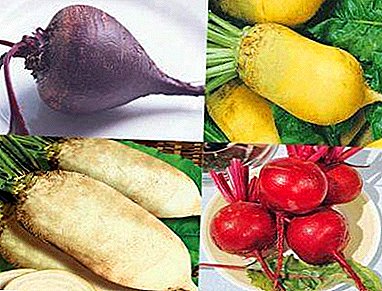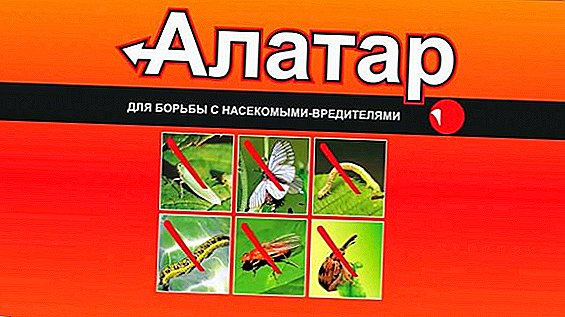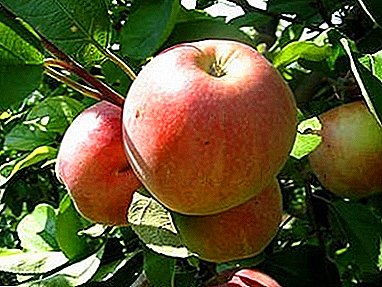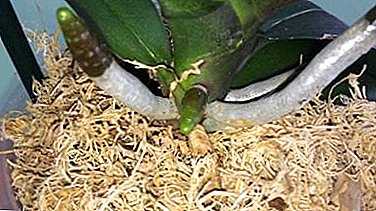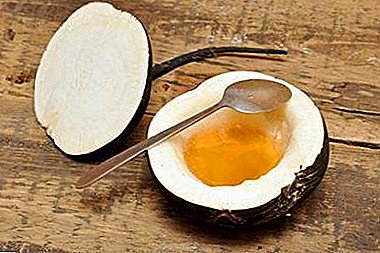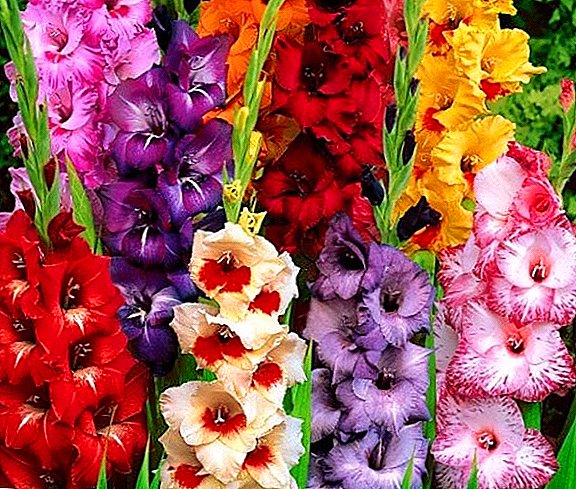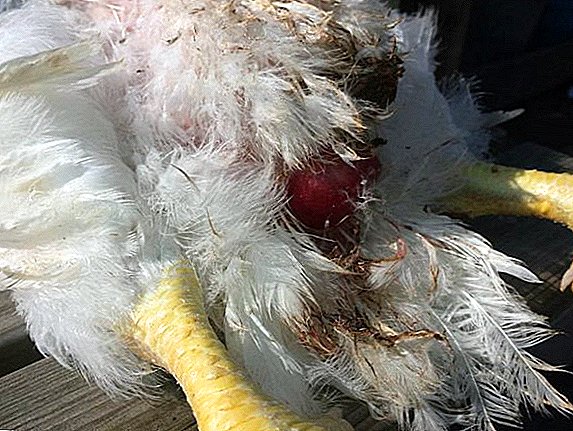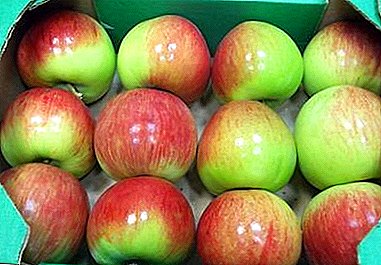
Rossoshansky apples - sweet, crunchy and pleasant-looking, received their recognition in the twenties. The variety very quickly became popular due to its good marketability and ability to adapt to different environmental conditions.
With proper care, the variety becomes one of the most productive. In addition, the apple tree has high winter hardiness, and can be planted in rather cold regions.
What kind is it?
Rossoshanskoe apple tree is a winter variety, the removable maturity of which occurs in the second half of September, and the consumer variety is in early winter. Apples are fairly well preserved, can last until mid-March, without losing their beneficial properties.
In order to keep the apples in the freshest form, you need to properly store them.
First of all, before placing the fruit, you need to select and postpone all damaged ones, they will not survive under any circumstances.. Wooden boxes are best for storage. Apples are neatly stacked in them, preferably down the stem.
Almost all apple and other fruit trees require cross-pollination. To achieve a good harvest, you need to plant next to those apples that blend well and pollinate each other. Rossoshanskoe apple is well pollinated by Welsey, Zelenka Dneprovskaya, Shtreyfling, Pepin Lithuanian.
Description varieties Rossoshansky
 Young trees have a small rounded crown, which becomes more spreading with age. Apple trees medium thick with grayish-brown bark and elastic shoots of medium length and thickness.
Young trees have a small rounded crown, which becomes more spreading with age. Apple trees medium thick with grayish-brown bark and elastic shoots of medium length and thickness.
Fruits are large or medium, round or conical in shape, with smooth skin. The color is yellow-green with dark red stripes, which often merge into a blush.
Breeding history
This variety was developed at the Rossoshansky zonal experimental station during pollination of Kronselsky Transparent by Aport Krasny. Apple tree immediately conquered gardeners, and after a while improvements began, which resulted in many hybrids. Each of the resulting varieties has its own characteristics and advantages.
Some of the species are: apple tree Rossoshanskoye Striped, Rossoshanskoye Bagryanoye, Rossoshanskoye Avgustovskoe, Rossoshanskoye Lezhkoe, Rossoshanskoye Amazing.
Adaptation in the regions
 The station at which this variety was first bred is located in the south of the Voronezh region.
The station at which this variety was first bred is located in the south of the Voronezh region.
Therefore, most varieties are zoned in the Voronezh, Belgorod, Kursk, Rostov and Volgograd regions, as they are located quite close to each other and have a similar climate.
Further experiments allowed us to develop varieties that adapt well to various conditions and tolerate a cold climate better.
Despite winter hardiness, the apple tree will feel best in the original home regions.
Yield
This variety is included in the list of the most fruitful apples. In good conditions the tree begins to bear fruit already at 4-5 year after planting, the annual crops.
Rossoshanskoe Striped - one of the most successful hybrids. He inherited the highest yield among all related varieties, as well as the strongest winter hardiness. From one such tree can be collected up to 170 kg of fruitsthat far exceeds the yield of other varieties.
Planting and care
 Planting an apple tree is a matter that must be taken responsibly; many qualities of the future tree depend on it.
Planting an apple tree is a matter that must be taken responsibly; many qualities of the future tree depend on it.
The first and most important point - landing time. Apple trees planted in the autumn, will have time to get stronger and prepare for active growth, but this option is only suitable for winter-hardy varieties. Planting a tree is worth at least a month before the cold weather begins.
Planting in the spring is a great way to give the tree the opportunity to gain strength for the subsequent winter.. The beginning of May or the end of April is the best time for spring planting.
The pit for the seedling should be prepared in advance so that the earth can settle down properly. When preparing the main thing is not to overdo it with the amount of fertilizer. A moderate amount of organic and mineral fertilizers will help the tree, but their excess can destroy it.
Nitrogen-containing products have a good effect on the growth of mature trees, but they will significantly slow down the survival rate of a seedling.
Apple tree - pretty Unpretentious plant, but for better harvest and well-being, you should follow some rules of care.
Watering
Young seedlings need watering. With this, you need to be careful, because it is very simple to overfill the plant too much, and then you should not escape trouble.
Thus, watering should be done once a week. In the future, the amount of watering is reduced, and the soil is mulched for longer retention of moisture.
Pruning
 To stimulate the growth of new branches, you need to regularly prune the top of the tree.
To stimulate the growth of new branches, you need to regularly prune the top of the tree.
Each new gain is shortened by a third, not more.
Pruning apple directly affects the amount of crop - the more branches the tree develops, the more fruits you will get as a result.
Since the Rossoshansky variety has a high level of yield, it is necessary to monitor its overload.
Top dressing
To enhance the growth of the tree, it is fed with nitrogen fertilizers once a year, in spring. An excessive amount of such fertilizers can put the formation of fruits.
Organic and mineral are brought in the fall. Apple tree does not need constant and frequent feeding, which is why this amount of fertilizer is optimal for it.
The soil at the trunk of a young tree should be regularly loosened.
Diseases and pests
Almost all varieties of apple Rossoshansky have one drawback - weak scab resistance. There are many more diseases that affect any apple tree:

Pests are no less dangerous for apple health:
- Apple aphid eats leaves and all green parts of a tree. In the fight against it will help solution Karbaphos. Ladybugs are the enemy of aphids. If you manage to get enough of them, they will get rid of problems with aphids.
- Red Apple Tick sucks the sap from the tree, wintering in the bark and parasitizing on the same apple tree for several years. In order not to use extra preparations on the tree, it can be dealt with by cleansing from the upper old layer of the bark.
- Apple Blossom eats the buds of the tree, its larvae destroy the buds from the inside, significantly reducing the yield. The tree can be treated with a solution of Karbofos, Chlorofos.
Rossoshanskoe apple varieties can rightfully be considered one of the most fruitful. Its fruits, which have long been known throughout the country, are filled with many store shelves.
If you please the apple tree with good care and proper feeding, in return it will delight you with tasty and beautiful fruits.


